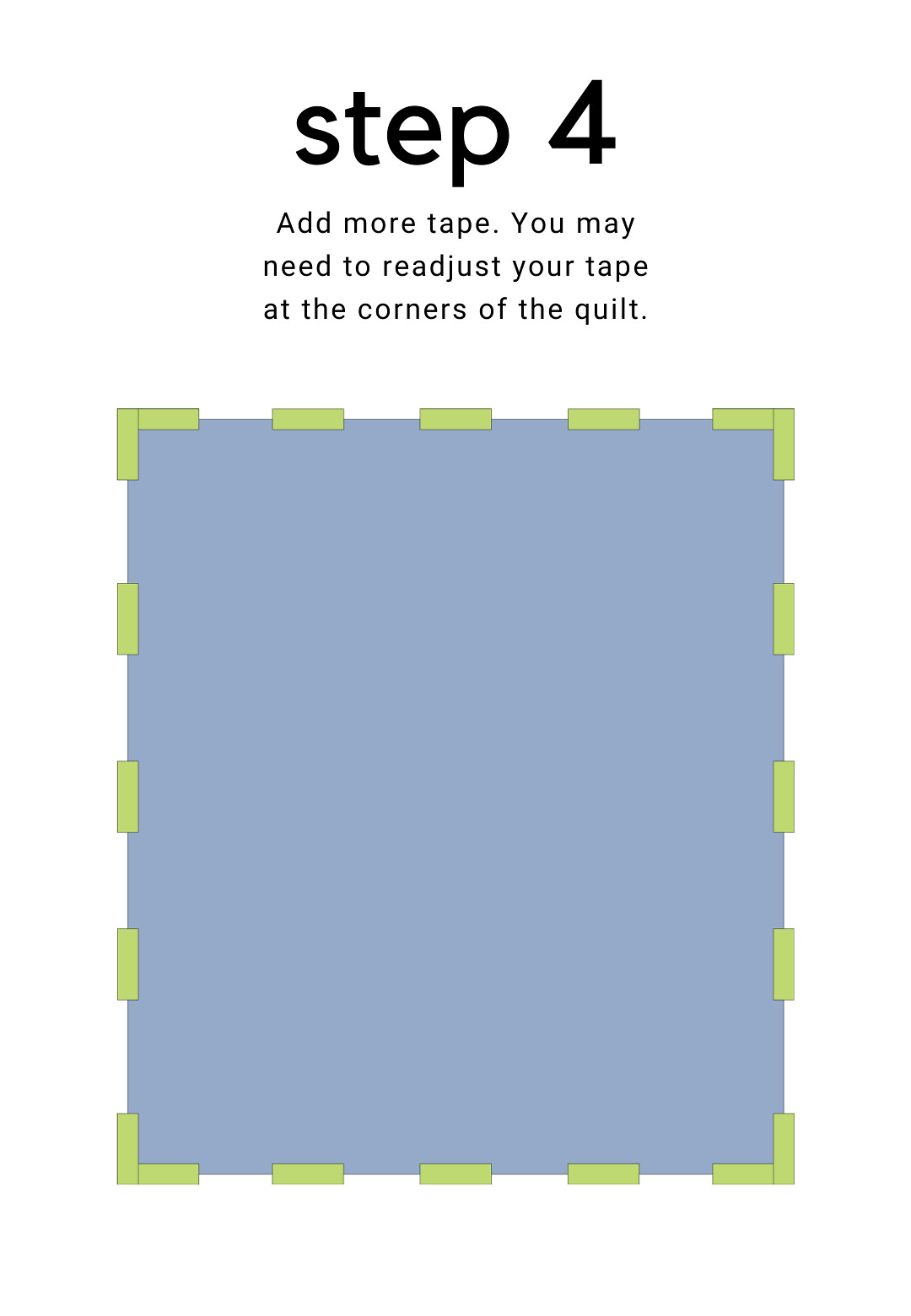It's time to baste our Violet Quilts! It seems like this is the most hated step in the entire process for lots of people. Basting can be tricky, it can be a little exhausting - I can see why people don't love it. But is it weird if I kind of enjoy this step? This post is going to be kind of long, but I wanted to really break down the steps so I could make it easy to understand for all skill levels.
Recommended Supplies
- 1.88" wide painter's tape for hard to stick surfaces - I have tried many, many different tapes and this one works well because it is wide and is very sticky. Another good option is gaffer's tape, but it is quite a bit more expensive.
- Basting pins - I like these Dritz size 1, curved basting pins.
- Kwik Klip - this a tool used for opening and closing pins and it will save your fingers/fingernails. Totally worth it. If you don't have one, I have heard that a butter knife works in a pinch.
- Batting - The type you use depends on your personal preference. I like to use 100% cotton batting and prefer mine to be a little thicker. My favorite kind is Quilter's Dream Cotton Select.
- Hera marker + a long ruler - if you are going to mark lines on your quilt for quilting (I almost never do this, but these are the tools I use when I do), I recommend that you mark them after Step 7 below.
There is more than one way to baste a quilt.
- Spray basting - a lot of people prefer this method because it is the fastest way to baste a quilt and it means that when you are quilting, there aren't any pins remove. While I almost never use spray baste, I keep a bottle of it around in case I am in a really big hurry to finish a project. This Odif brand works well and doesn't smell too chemically. A lot of people ask me why I don't spray baste my quilts since it is quicker - here are my reasons:
- Spray baste costs money and I am cheap. I baste a quilt almost every week and a bottle of adhesive costs close to $20 - it is enough to baste a few quilts. I can buy basting pins that will last me years without having to be replaced. Over time, it adds up.
- I do not like the chemicals. No matter which kind you buy, it will involve chemicals (there are recipes out there to make a spray adhesive that doesn't use chemicals, but I haven't personally tried them).
- I don't like the sticky residue it leaves on my floor if I accidentally overspray my quilt.
- Before I baste a quilt, I trim extra threads on the back of my quilt so that they don't show through - especially if there is a lot of white on my quilt. Sometimes I will end up missing some threads and need to fold the quilt top back to trim the thread - this is much trickier if you have adhered your quilt top to your batting.
- And really the main reason is that I don't feel like my results are as good with spray baste. There are lots of people out there who swear by it and maybe if I kept trying, I would get better results. My method works consistently well for me so I stick with it.
- Pin basting - this is my preferred method! I will go into further detail regarding my process below.
- Thread basting - this is a traditional method and I know virtually nothing about it, but it is an option.
- You can have a long armer baste your quilt. I have never done this so I am not sure if it is a service that most long armers even offer, but some do - I think it is usually done for hand quilting projects.

























Gorgeous varieties!
ReplyDeleteI'm like you. I prefer pin basting and I use the same pins. I'm going to have to try the painter's tape you recommended. I don't like spray baste for the same reasons - sticky residue and chemicals. I really prefer Quilter's Dream Orient for batting for its softness, but I do also use Quilter's Dream Cotton Select. It's easier to find locally. Thanks for a great tutorial.
ReplyDeleteQuilter's Dream is just a really great brand all around - I haven't used one of their battings that I didn't like.
Delete